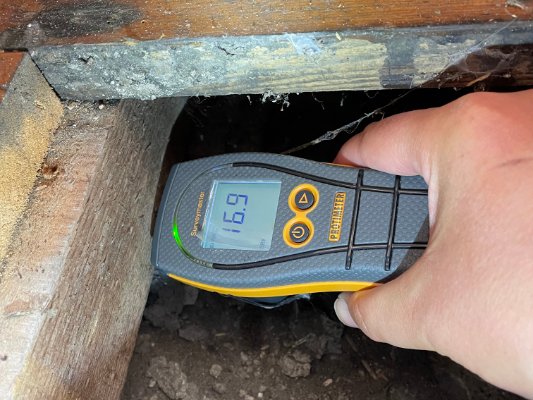We received an enquiry from a client who was concerned about several issues and in need of practical advice after moving in to his 110 year old terraced property. We were advised that damp patches were clearly visible on the upper section of the rear wall in the dining room, we therefore scheduled the inspection for a day when heavy rain was forecast. An external inspection revealed that rainwater was spilling out of the end cap on the gutter of the neighbouring property, and running down the wall in the area where dampness was noted internally, as a precautionary measure we cut and lifted floor boards in the first floor bedroom to inspect the first floor timbers which we deemed to be at risk of fungal decay and woodworm infestations which can lead to structural collapse of timber. Guidance on allowing an appropriate drying out period and re-decoration was provided.
A comprehensive inspection of the roof void timbers was conducted and the timbers in the main very found to be in sound condition, however we noted a leak which was leading to saturation of one of the tie beam timbers, we advised a prompt repair and treatment with an approved timber preservative to protect the timber from fungal decay in the meantime.
Inspection of the external wall on the front elevation was found to be wet to the touch, no traces of black-spot mould growth were noted, this would suggest that the wall may have been painted with emulsion incorporating an anti-mould paint additive, using our specialist equipment we recorded the surface temperature of the wall to be 11.2 degrees and the Dew Point temperature (when water vapour in the air turns to water droplets) was 10.4 degrees. We advised that it was likely that condensation was likely to be occurring during the night when the central heating system was switched off as warm air holds moisture and cold air does not. Advisory notes on how to manage condensation in the home were provided together with our detailed report.
No other significant moisture meter readings were recorded on any walls throughout the property, other than some slight surface moisture meter readings in a utility area, these readings proved to be on the surface only, as this was confirmed with the use of an instrument that ignores surface moisture and measures moisture within walls.
Based on our findings at this property no damp-proofing works at all were deemed to be necessary.

